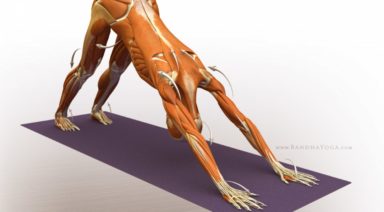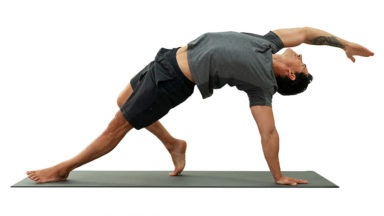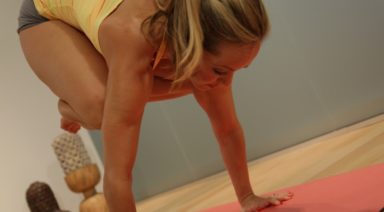The Journey of Savasana

Diving Into the Mystery, Remembering How to Let Go
“Remember fear for what it is, resistance to the unknown.” -Terry Tempest Williams
Pause, take a deep breath. Invite the possibility to read this article with a soft face and receptive eyes.
Intrigued by the experiences of letting go, deep rest and the healing which unfolds on this journey, this article dives into the questions and uncertainties which are at the essence of savasana.
First, consider when and where you take savasana?
What position do you come to rest in? And, are you really, lovingly, giving yourself an opportunity to let go?
Put on a few layers to be sure you are warm enough. A thick blanket over your body is a nice way to encourage the body’s surrender to gravity…like a gravity blanket resting over your skin layer. And, an eye pillow or a scarf over the eyes can really help to allow the eyes and brain cavity to relax into earth. Take adequate time to adjust and if you have aches and pains in your body, consider using props and bolsters to support yourself. Some options I like are a bolster behind the upper thigh bones, thin blocks under the backs of the palms (allows forearms and hands to soften), or a rolled up blanket in the hollow space behind the neck.
How much time to you give yourself? Or, how much time do you give your class, if you are a teacher? In this busy world of time, it seems that this universally beneficial posture often gets squeezed in, or used simply as a way to recover from a sweaty yoga class.
“It is to relinquish who you are and to let go of life’s concerns into the merest of being alive. Such letting go into the smooth presence of simple being is not the kind of visible, salable skill a businessman or a violinist might develop. But, it is not at all trivial. To really let go, to not try, not even a little, is its’ own kind of mastery.” -Robert Forman
Second, consider how you drop in and how you retreat from the posture?
Once you are set, settle and breathe. Feel the parts of your body that touch earth. Feel the parts of the body that touch sky. You are the space between earth and sky. Receive the breathe through the layers of your being. Explore flickering the eyes , open and closed, almost unconsciously, as you drop into savasana. This is almost a mimicry of the dying process, slowly, slowly, letting go.
Can you have an intention to let go and simultaneously receive the unfolding as it manifests inside of you?
When the time comes to retreat from the womb of savasana; pause.
Pause.
Feel the parts of your body that touch earth. Feel the parts of your body that touch sky. You are the space between earth and sky. Let the mystery unfold in the space between the inner landscape of your body and the outer landscape of this world. Absorb the residue which lingers, right now. However you are inspired to, move slowly towards seated.
Lastly, consider the broader questions/ideas below. Look inwards for the edges of relaxation and see what you find. For me, it’s smooth edges, endless space and deep mystery. It’s sometimes scary, sometimes sleepy, and always a journey of truth, which asks me to peel back the layers and really show up for the truth of my life.
- Does your yoga practice prepare you for savasana?
What is the transition like, for you, between movement and stillness?
When the parasympathetic nervous system is stimulated throughout the yoga practice, it is much more natural for our whole being to move towards a state of letting go. Even in a dynamic movement flow, if the tone of the movement remains soft and fluid, we are much more in tune with the basic primal rhythms of life (primary respiration, heart-beat, breath, etc) and as a result we can more deeply merge with the earth energies as we relax into savasana.
- Why is it often referred to as the most important pose?
Given that one of the only certainties in life is death, facing our own mortality seems something interesting to ponder and even, perhaps, practice. And, perhaps facing death allows us to really come into contact with intentions for how we want to live our lives, here and now.
- Notice and embrace the shifts in your practice?
Resist labeling your savasana practice as good or bad. Some days, weeks or years, we are going through life events and relaxation is inevitably not easy. Rather then avoiding it all together, create a safe space and be gentle and open with yourself.
If you have had trauma in your life, savasana can often be the place where it resurfaces. This doesn’t have to be a bad thing, just an opportunity to revisit and move through events, which are still residing in the tissues of our being.
“Once again there was a pervasive silence and once again I waited for the onset of fear to break it up. But this time the fear never came…within, all was still, silent and motionless. In the stillness, I was not aware of the moment when the fear and tension of waiting had left. Still I continued to wait for a movement not of myself and when no movement came, I simply remained in a great stillness…Once outside, I fully expected to return to my ordinary energies and thinking mind, but this day I had a difficult time because I was continually falling back into the great silence.” -Bernadette Roberts
5 Hidden Benefits of Downward-Facing Dog

If you’ve attended a yoga class, you’ve probably done downward-facing dog pose. Downward-facing dog is a foundational pose found in various vinyasa yoga flows, and for many of us, we initially feel the stretch in the arms, the back, and the legs. That’s the obvious, but there are so many other benefits to exploring downward-facing dog. Downward-facing dog is a very challenging pose, as the muscles are working to hold the pose against gravity.
5 Hidden Benefits of Downward Facing Dog:
Strengthens Abdominal Muscles
Envision turning downward-facing dog right side up into boat pose. Just as you would with boat pose, engaging the belly in downward-facing dog strengthens and abdominal muscles that support the spine.
Improves Circulation
Many tend to forget that downward-facing dog is an inversion! As the hips lift and the head drops below the heart, the pull of gravity is reversed and fresh blood flows, aiding in circulation.
Improves Digestion
Although downward-facing dog is not a full bend or fold, the pose does allow for slight abdominal compression by drawing the navel into the spine. The pose compresses the organs like the kidneys, liver and the spleen, aiding in digestion.
Tones the hands and feet
Downward-facing dog is weight-bearing pose that prepares hands and feet for standing and arm balancing poses.
Decreases Anxiety
Stretching the cervical spine and the neck allows the head and your mind to relax.
So the next time you’re in downward-facing dog, enjoy the obvious and not-so-obvious benefits of the pose!





































